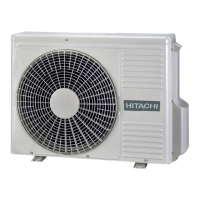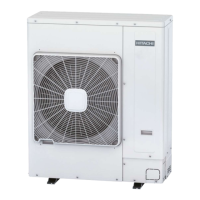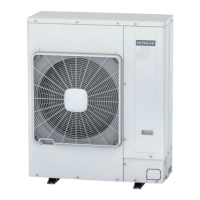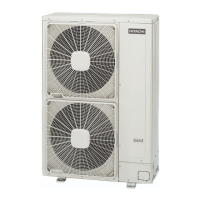3 Piping work and refrigerant charge
Refrigerant charge
SMGB0136 rev.0 - 07/2021
59
3
3.4 Refrigerant charge
! CAUTION
• Do not charge OXYGEN, ACETYLENE, or other ammable and poisonous gases into the refrigerant, as an explosion could occur. It
is recommended that oxygen free nitrogen be charged for these types of test cycles when performing a leakage test or an airtight test.
These types of gases are extremely dangerous.
• Insulate the unions and are-nuts at the piping connection part completely.
• Insulate the liquid piping completely to avoid a decreased performance; if not, it will cause sweating on the surface of the pipe.
• Charge refrigerant correctly following the procedures of the manuals. Overcharging or insufcient charging could cause a compressor
failure.Insulate the unions and are-nuts at the piping connection part completely.
• Check for refrigerant leakage in detail. If a large refrigerant leakage occurred, it would cause difcult breathing.
• If the are nut is tightened too hard, the are nut may crack after a long time and cause refrigerant leakage.
1 Connect the gauge manifold using charging hoses with a vacuum pump or a nitrogen cylinder to the check joints of
the liquid line and the gas line stop valve.
2 Check for any gas leakage at the are nut connection, by using nitrogen gas to increase the pressure at 4.15 MPa for
outdoor units inside of the eld-supplied piping.
3 Operate the vacuum pump for 1 to 2 hours until the pressure decreases lower than a pressure of 756 mmHg in
vacuum.
? NOTE
Charge the proper quantity of refrigerant according to the piping length (Calculate the quantity of the refrigerant charge).
4 For charging refrigerant, connect the gauge manifold using charging hoses with a refrigerant charging cylinder to the
check joint of the liquid line stop valve.
5 Fully open the gas line stop valve, and slightly open the liquid line stop valve.
6 Charge refrigerant by opening the gauge manifold valve.
7 Charge the required refrigerant within the difference range of ±0.5 kg by operating the system in cooling.
8 Fully open the liquid line stop valve after completing refrigerant charge.
9 Continue cooling operation for more than 10 minutes to circulate the refrigerant.
Liquid Stop Valve
Gas Stop Valve
Vacuum cylinder
Nitrogen tank
(For air tight test
and Nitrogen
blow during
brazing)
Monoblock system

